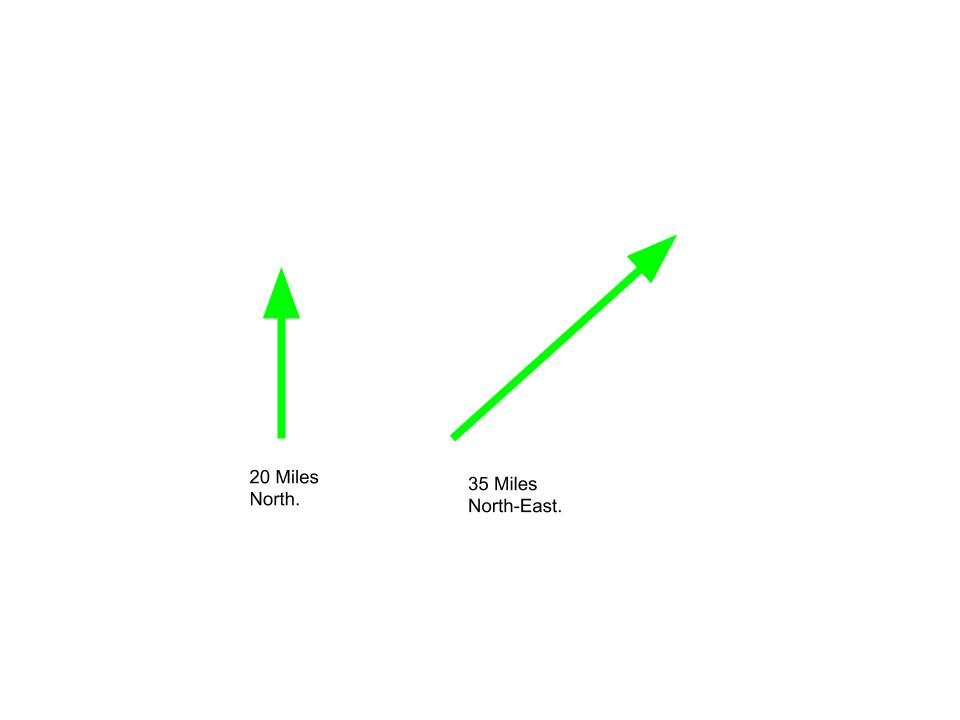Using class to implement Vector Quantities in C++
Last Updated :
28 Nov, 2022
A Vector Quantity is a Quantity which possesses both magnitude as well as direction. Here, magnitude is simply the amount or size of the quantity and direction is where the quantity is headed. For example, consider the statement “Go 20 miles north”. In the above statement 20 is the magnitude and North is the direction.  Examples:
Examples:
Input : Store and display vector with components 3, 4, 5.
Output : 3i + 4j + 5k
Input : Dot Product for V1 = (1, 3, 5), V2 = (2, 3, 0)
Output : 11
where i, j, k are unit vectors in x, y and z directions respectively.
In General a Vector is represented as:
V = Xi + Yj + Zk Where, X, Y and Z are the magnitude of the vector V in the directions i , j and k respectively.
Various operations that can be performed on Vectors:
- Addition of vectors: Addition of vectors is done by adding the corresponding X, Y and Z magnitudes of the two vectors to get the resultant vector. Example: v1 = 1i + 2j + 3k v2 = 3i + 2j + 1k Therefore the resultant vector, v = v1 + v2 = 4i + 4j + 4k
- Dot product of vectors: Dot product of two vectors v1 and v2 is calculated as:
v = v1 . v2
= magnitude(v1)*magnitude(v2)*Cos(θ)
Where, θ is the angle between the vectors v1 and v2.
- Example: v1 = 1i + 2j + 3k v2 = 3i + 2j + 1k Therefore, v = v1 . v2 = 3 + 4 + 3 = 10
- Cross product of vectors: Cross product of vectors is done by using determinant for vectors a = axi + ayj + azk and b = bxi + byj + bzk c = a X b = i(ay*bz – by*az) – j(ax*bz – az*bx) + k(ax*by – bx*ay) Example: v1 = 3i + 4j + 2k v2 = 6i + 3j + 9k Therefore, v = v1 X v2 = 30i – 15j – 15k
Below is the implementation of above operations using class in C++:
CPP
#include <cmath>
#include <iostream>
using namespace std;
class Vector {
private:
int x, y, z;
public:
Vector(int x, int y, int z)
{
this->x = x;
this->y = y;
this->z = z;
}
Vector operator+(Vector v);
Vector operator-(Vector v);
int operator^(Vector v);
Vector operator*(Vector v);
float magnitude()
{
return sqrt(pow(x, 2) + pow(y, 2) + pow(z, 2));
}
friend ostream& operator<<(ostream& out, const Vector& v);
};
Vector Vector::operator+(Vector v)
{
int x1, y1, z1;
x1 = x + v.x;
y1 = y + v.y;
z1 = z + v.z;
return Vector(x1, y1, z1);
}
Vector Vector::operator-(Vector v)
{
int x1, y1, z1;
x1 = x - v.x;
y1 = y - v.y;
z1 = z - v.z;
return Vector(x1, y1, z1);
}
int Vector::operator^(Vector v)
{
int x1, y1, z1;
x1 = x * v.x;
y1 = y * v.y;
z1 = z * v.z;
return (x1 + y1 + z1);
}
Vector Vector::operator*(Vector v)
{
int x1, y1, z1;
x1 = y * v.z - z * v.y;
y1 = z * v.x - x * v.z;
z1 = x * v.y - y * v.x;
return Vector(x1, y1, z1);
}
ostream& operator<<(ostream& out, const Vector& v)
{
out << v.x << "i ";
if (v.y >= 0)
out << "+ ";
out << v.y << "j ";
if (v.z >= 0)
out << "+ ";
out << v.z << "k" << endl;
return out;
}
int main()
{
Vector V1(3, 4, 2), V2(6, 3, 9);
cout << "V1 = " << V1;
cout << "V2 = " << V2;
cout << "V1 + V2 = " << (V1 + V2);
cout << "Dot Product is : " << (V1 ^ V2);
cout << "Cross Product is : " << (V1 * V2);
return 0;
}
|
Output:
V1 = 3i + 4j + 2k
V2 = 6i + 3j + 9k
V1 + V2 = 9i + 7j + 11k
Dot Product is : 48Cross Product is : 30i -15j -15k
Like Article
Suggest improvement
Share your thoughts in the comments
Please Login to comment...